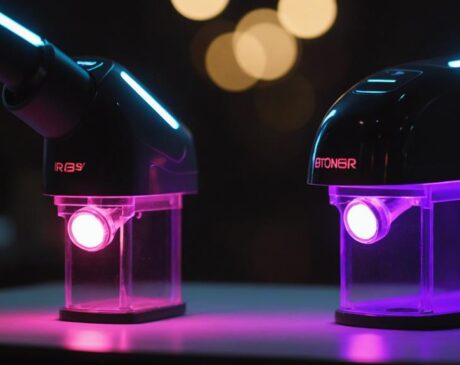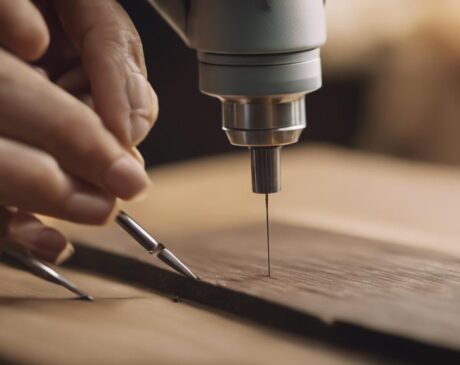Which Liquid Nails is the strongest?

Liquid Nails is a well-known name in the adhesive industry, offering a wide range of products designed for a variety of bonding tasks. Known for its strength and versatility, Liquid Nails has become the go-to solution for professionals and DIY enthusiasts alike. The brand encompasses a wide range of adhesive types, each tailored to specific materials and applications. From small home repairs to large construction projects, Liquid Nails offers reliable bonding solutions that ensure durability and longevity.
The importance of adhesive strength
The strength of adhesives is critical, especially during construction and repair tasks. Strong adhesives ensure that materials are firmly bonded, reducing the risk of failure and enhancing structural integrity. The strength of an adhesive affects its load-bearing capacity, its resistance to environmental factors and its longevity. Therefore, choosing an adhesive with the right strength is critical to the success and safety of any project.
Understanding Liquid Nails
Ingredients and Types
Liquid Nail adhesives consist primarily of solvent-based or water-based formulations, each designed to meet different bonding needs. Solvent-based adhesives are known for their strong bonding strength and durability, especially in challenging conditions. On the other hand, water-based adhesives are easier to handle and more environmentally friendly, making them suitable for indoor applications that require ventilation.
The Liquid Nail product line includes:
- Construction Adhesives: designed for heavy-duty applications in building and construction, these adhesives are high strength and weather resistant.
- Specialty Adhesives: These adhesives are tailored to specific materials such as wood, metal or plastic to ensure optimal bonding for specific applications.
- Multi-purpose adhesives: Versatile and easy to use for a wide range of materials and applications, both indoors and outdoors.
Common Uses
Liquid Nails products are used in a wide variety of applications, including:
- Home Repair and DIY Projects: From repairing broken furniture to creating DIY projects, Liquid Nails provides a reliable solution.
- Construction: These adhesives are used to install subfloors, paneling, and drywall, providing a strong bond and supporting structural integrity.
- Landscaping and Outdoor Projects: Some Liquid Nails products are formulated to withstand the outdoor elements, making them ideal for landscaping projects and exterior construction.
Compare the advantages of liquid nail products
Liquid Nails Heavy Duty
Liquid Nails Heavy Duty is a solvent-based construction adhesive known for its superior strength and durability. It is designed to bond a wide range of materials, including wood, metal, and concrete. This product is especially valued for its weathering properties, making it ideal for outdoor projects where exposure to the elements needs to be considered.
Liquid Nails Fuze*It
Liquid Nails Fuze* It stands out for its versatility and superior bond strength on a variety of surfaces, including glass, metal, and ceramics. Its unique formula allows it to bond in wet conditions and on oily surfaces, making it a suitable choice for both indoor and outdoor applications.
Liquid Nail Floor and Deck
Formulated for subfloor and deck installations, this adhesive provides a strong, weatherproof bond. It is designed to prevent squeaks and provide a strong bond under extreme temperature changes, making it critical for flooring and trim applications.
Factors Affecting the Strength of Liquid Nails
The strength and effectiveness of Liquid Nails products can be affected by several factors:
- Surface type: The material of the surface being bonded plays a critical role. Rough, porous surfaces typically provide a stronger bond than smooth, non-porous surfaces.
- Environmental conditions: Temperature and humidity affect the curing process of the adhesive and its final strength.
- Application method: Proper application, including surface preparation and adhesive curing, is critical to achieving maximum bond strength.
Factors affecting the strength of liquid nails
Surface Type
Surface type is a key factor in the performance of Liquid nail adhesives. Different surfaces have varying degrees of porosity and texture that affect how the adhesive bonds. For example, porous surfaces such as wood or concrete typically allow the adhesive to penetrate more deeply, resulting in a stronger bond. On the other hand, non-porous surfaces such as metal or plastic may require specially formulated adhesives for optimal bonding. Preparing the surface by cleaning and roughening it can enhance the effectiveness of the adhesive.
Environmental conditions
Environmental conditions play an important role in the application and curing of adhesives. Temperature and humidity affect the drying time and final strength of the adhesive. Liquid nail products are usually formulated to withstand a range of conditions, but extreme temperatures or high humidity can affect the curing process. For best results, it is important to consider these factors and follow the manufacturer’s guidelines.
Application Method
The application method is another key aspect. Correct application techniques, such as ensuring that the right amount of adhesive is applied and allowing sufficient curing time, are essential to achieve maximum bond strength. Using too little adhesive may result in a weak bond, while too much can lead to drying and curing problems. For optimum performance, it is important to follow the manufacturer’s instructions regarding application and curing times.
Expert Opinion and Testing
Industry Standards
Liquid Nails products are tested and formulated to meet a variety of industry standards. These standards ensure that adhesives perform reliably under varying conditions and applications. Adherence to industry standards is proof of product quality and reliability.
Testimonials and User Experiences
Testimonials from professionals and DIY enthusiasts who have used Liquid Nails products provide valuable insight into the actual performance of these adhesives. User experiences often emphasize the strength, durability, and versatility of the products, as well as their effectiveness in a variety of applications.
Case Study: Liquid Nails in Action
Residential Use
In residential settings, Liquid Nails adhesives have been used in a variety of projects, from installing kitchen countertops to repairing wood furniture. These case studies demonstrate the adhesive’s ability to provide a long-lasting bond that improves the longevity and safety of a home’s structure.
Commercial Uses
In commercial and industrial environments, Liquid Nails products are used in more demanding applications. Examples include the installation of flooring systems in high-traffic areas or the assembly of outdoor signage. These case studies illustrate the robustness and reliability of the adhesives under challenging conditions.
Safety and Precautions
Handling and Storage
Proper handling and storage of Liquid nail products is critical to safety and maintaining their efficacy. It is important to store adhesives in a cool, dry place away from extreme temperatures and direct sunlight. It is also important to keep them out of the reach of children and pets.
Health and Safety Guidelines
It is important to follow health and safety guidelines when using chemical products such as liquid nail polish. This includes using personal protective equipment such as gloves and masks, ensuring good ventilation, and avoiding direct contact with skin or inhaling fumes.
Alternatives to Liquid Nails
While Liquid Nails offers a wide range of adhesive products, there are other alternatives on the market. These include other brands of construction adhesives, environmentally friendly options, and adhesives that are specialized for specific materials or conditions. Choosing an alternative should be based on the specific requirements of the project and the materials involved.
DIY Tips for Using Liquid Nails
Best Practices
To maximize the effectiveness of liquid nail adhesives, it’s important to follow certain best practices:
- Surface Preparation: Ensure that the surface is clean, dry, and free of dust or grease. This improves the adhesive’s grip.
- Proper application: Apply adhesive in a jagged pattern for larger surfaces and in a bead for smaller items. This ensures even distribution.
- Adequate pressure: After application, press surfaces firmly together to ensure a strong bond.
- Cure Time: Allow enough time for the adhesive to fully cure. This may vary depending on the product and environmental conditions.
Common Mistakes to Avoid
Avoiding common mistakes can significantly improve the performance of liquid nail adhesives:
- Using too much adhesive: Overuse can lead to longer drying times and weaker bonds.
- Inadequate surface preparation: Inadequate surface preparation can lead to poor adhesion.
- Ignoring temperature and humidity: Using adhesives in unsuitable environmental conditions can affect performance.
- Speeding up the curing process: Not allowing enough time for the adhesive to fully cure may impair bond strength.
Cost Effectiveness and Availability
Pricing Comparison
Liquid nail products are often cost-effective, especially given their strength and durability. Pricing may vary depending on the specific type and quantity of adhesive. In comparison, liquid nails are typically more economical than other high-end adhesives, providing a balance between quality and cost.
Where to buy.
Liquid nail adhesives are widely available at most hardware stores, home improvement centers and online marketplaces. Accessibility and convenience make it easy for consumers to purchase these products for their projects.
Environmental Impact
Sustainability Issues
The sustainability of building materials, including adhesives, has become a major concern as awareness of environmental issues grows. Some liquid nail products contain solvents and other chemicals that may have an impact on the environment.
Eco-friendly options
To address these concerns, liquid nail lines and other brands offer eco-friendly alternatives. These products are formulated to minimize their impact on the environment and are often low VOC (Volatile Organic Compound) formulated.
The Future of Adhesives
The adhesives industry continues to evolve with a focus on developing stronger, more versatile and environmentally friendly products. Innovations may include new formulations that offer enhanced performance while being more sustainable. The future of adhesives promises improvements in strength, safety, and environmental impact.
FAQ: Frequently Asked Questions about Liquid Nails
How long does it take for Liquid Nails to dry?
It usually takes 24 hours to form a strong bond, but full curing can take up to a week, depending on the product and conditions.
Can Liquid Nails be used on plastic?
Some Liquid Nail products are suitable for use on plastics, but it is important to choose the correct type for your particular plastic material.
Can Liquid Nails be painted?
Most Liquid Nail products are fully cured and ready to paint.
How do I remove Liquid Nails?
Once cured, liquid nails are very difficult to remove. Mechanical methods or specific solvents are usually required.
Are liquid nail adhesives waterproof?
Some liquid nail products are designed to be waterproof or water-resistant, but it’s important to check the specifications of each product.




